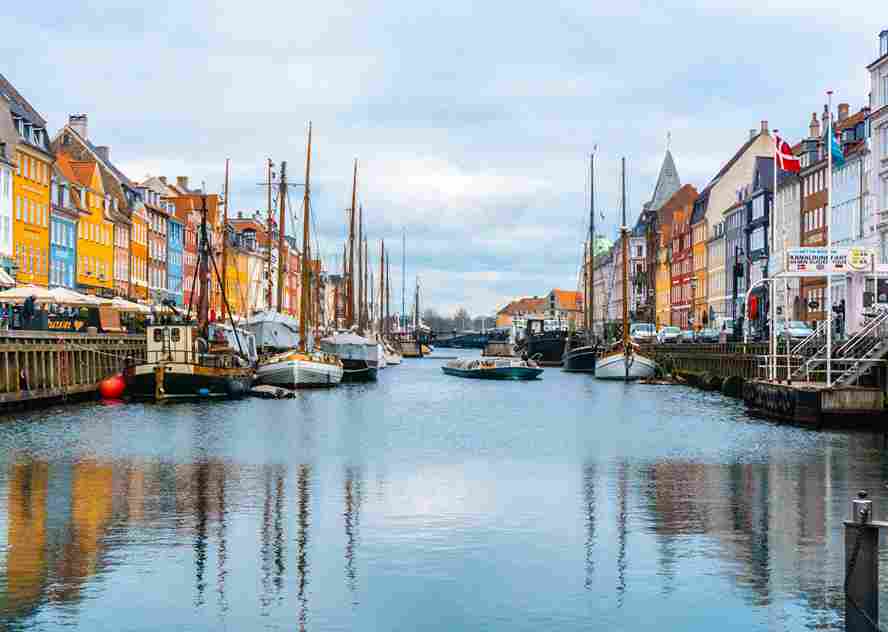
Denmark
Explore Denmark
Denmark
Denmark: A Scandinavian Wonderland of History, Design, and Hygge
Denmark is a charming Nordic country known for its fairytale landscapes, rich history, and world-class design. From the vibrant streets of Copenhagen to the stunning fjords of Jutland, Denmark offers a perfect mix of cultural exploration and scenic beauty. Whether you’re exploring Viking heritage, cycling through picturesque towns, or indulging in world-renowned Danish cuisine, Denmark is a must-visit for history buffs, foodies, and design enthusiasts alike.
Learn More
Frequently Asked Questions: Denmark
Denmark offers unique experiences in every season:
- May–September (Spring & Summer):Best for long daylight hours, warm temperatures, and outdoor activities.
- October–November (Fall):Ideal for colorful foliage, fewer tourists, and cozy indoor attractions.
- December–February (Winter):Perfect for Christmas markets, hygge culture, and lower hotel rates.
- March–April (Spring):A great time for blooming flowers, milder temperatures, and exploring without the summer crowds.
- Copenhagen:Denmark’s capital, filled with colorful buildings, canals, and historic landmarks.
- Nyhavn:The iconic waterfront lined with colorful 17th-century townhouses and boats.
- Tivoli Gardens:One of the world’s oldest amusement parks, perfect for all ages.
- The Little Mermaid Statue:A tribute to Hans Christian Andersen’s famous fairytale.
- Rosenborg Castle:A Renaissance castle housing Denmark’s crown jewels.
- Frederiksborg Castle:A stunning fairytale-like castle in Hillerød.
- LEGO House & LEGOLAND Billund:A must-visit for LEGO lovers and families.
- Aarhus:Denmark’s second-largest city, known for its Viking history and modern architecture.
- The Faroe Islands (Day Trip):A remote paradise with breathtaking landscapes.
- Bornholm:A beautiful island famous for its beaches, cliffs, and smoked herring.
- Kronborg Castle:The setting of Shakespeare’s Hamlet, located in Helsingør.
- Jægersborg Deer Park:A UNESCO-listed park with free-roaming deer.
- Møns Klint:Stunning white chalk cliffs along Denmark’s eastern coastline.
- The National Museum of Denmark:A fascinating dive into Viking history and Danish heritage.
- Smørrebrød:Open-faced sandwiches with various toppings like pickled herring, roast beef, and shrimp.
- Danish Pastries (Wienerbrød):Buttery, flaky pastries filled with custard, jam, or chocolate.
- Frikadeller:Danish meatballs made from pork or veal.
- Stegt Flæsk med Persillesovs:Crispy pork with parsley sauce, Denmark’s national dish.
- Æbleskiver:Traditional Danish pancake balls, often served with jam and powdered sugar.
- Rød Pølse:A bright red Danish hot dog, a popular street food.
- Rugbrød:Dense rye bread, a staple in Danish cuisine.
- Fiskefrikadeller:Fish cakes made from cod or other local fish.
- Hygge-Friendly Drinks:Try Danish craft beer, schnapps, or mulled wine (gløgg) in winter.
- Salted Licorice (Lakrids):A love-it-or-hate-it Danish candy.
- Flights:Arrive at Copenhagen Airport (CPH), the main international gateway.
- Bicycles:Denmark is a cyclist’s paradise, with dedicated bike lanes in all major cities.
- Trains:The Danish rail system is efficient and connects major cities and towns.
- Metro & Buses:Public transport is reliable and easy to use in Copenhagen and other cities.
- Ferries:Essential for visiting islands like Bornholm and the Faroe Islands.
- Car Rentals:Recommended for exploring rural Denmark and scenic coastal routes.
- For EU travelers:No visa required.
- For U.S. travelers:No visa required for stays up to 90 days.
- For international travelers:Check Denmark’s visa requirements based on your nationality.
- Schengen Visa:Required for travelers from certain countries.
- Currency:Danish Krone (DKK).
- Credit cards:Widely accepted, especially Visa and Mastercard.
- ATMs:Available throughout Denmark, offering fair exchange rates.
- Cash:Not commonly used, as Denmark is moving towards a cashless society.
- Danishis the official language.
- English is widely spoken,especially in tourist areas and major cities.
- Most signs, menus, and tourist information are available in English.
- Hygge is a way of life—embrace cozy, relaxed, and comfortable moments.
- Danish people value politeness—a simple “Tak” (thank you) goes a long way.
- Tipping is not expectedbut appreciated (rounding up to the nearest krone is common).
- Respect for personal space—Danes tend to be reserved but friendly.
- Follow cycling rules—biking is taken seriously, so use bike lanes and signals.
- Be environmentally conscious—Denmark is one of the greenest countries in the world.
- Restaurants:Tipping is not expected, but rounding up is appreciated.
- Bars:No tipping necessary, but rounding up is common.
- Hotels:No need to tip housekeeping, but a small gratuity is appreciated.
- Taxis:No tipping required, but rounding up the fare is polite.
- Tour Guides:A small tip is appreciated for excellent service.
- For peak travel season (June–August):Book 6–12 months in advance for hotels and flights.
- For Christmas markets (December):Book at least 3–6 months ahead.
- For Michelin-starred restaurants:Make reservations several weeks in advance.
- For ferry trips to Bornholm or Faroe Islands:Book early during summer.
- No COVID-19 test is required for entry,but check for updates before traveling.
- Public transport runs smoothly,but bikes are often faster in cities.
- Shops and businesses may close early(especially on Sundays).
Contact us at 281-229-0862or admin@pointmetoparadise.com
